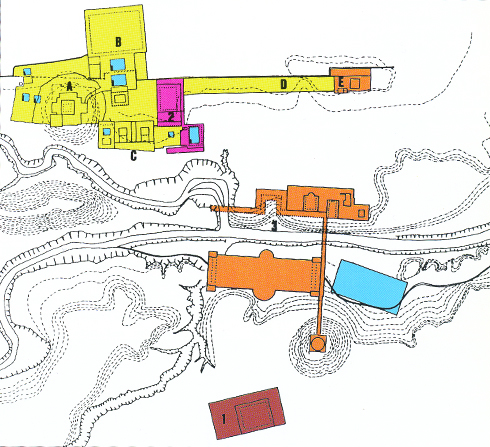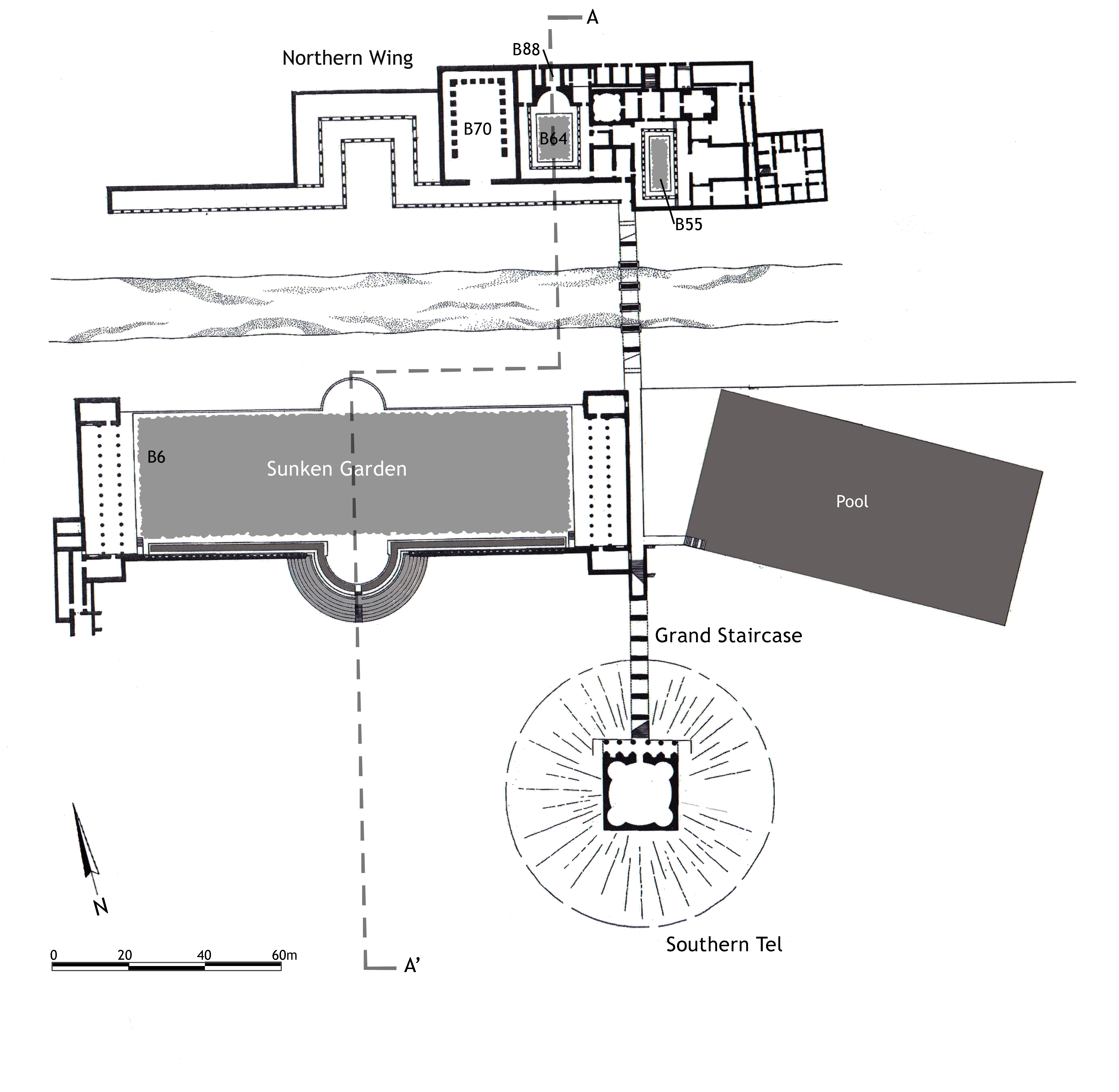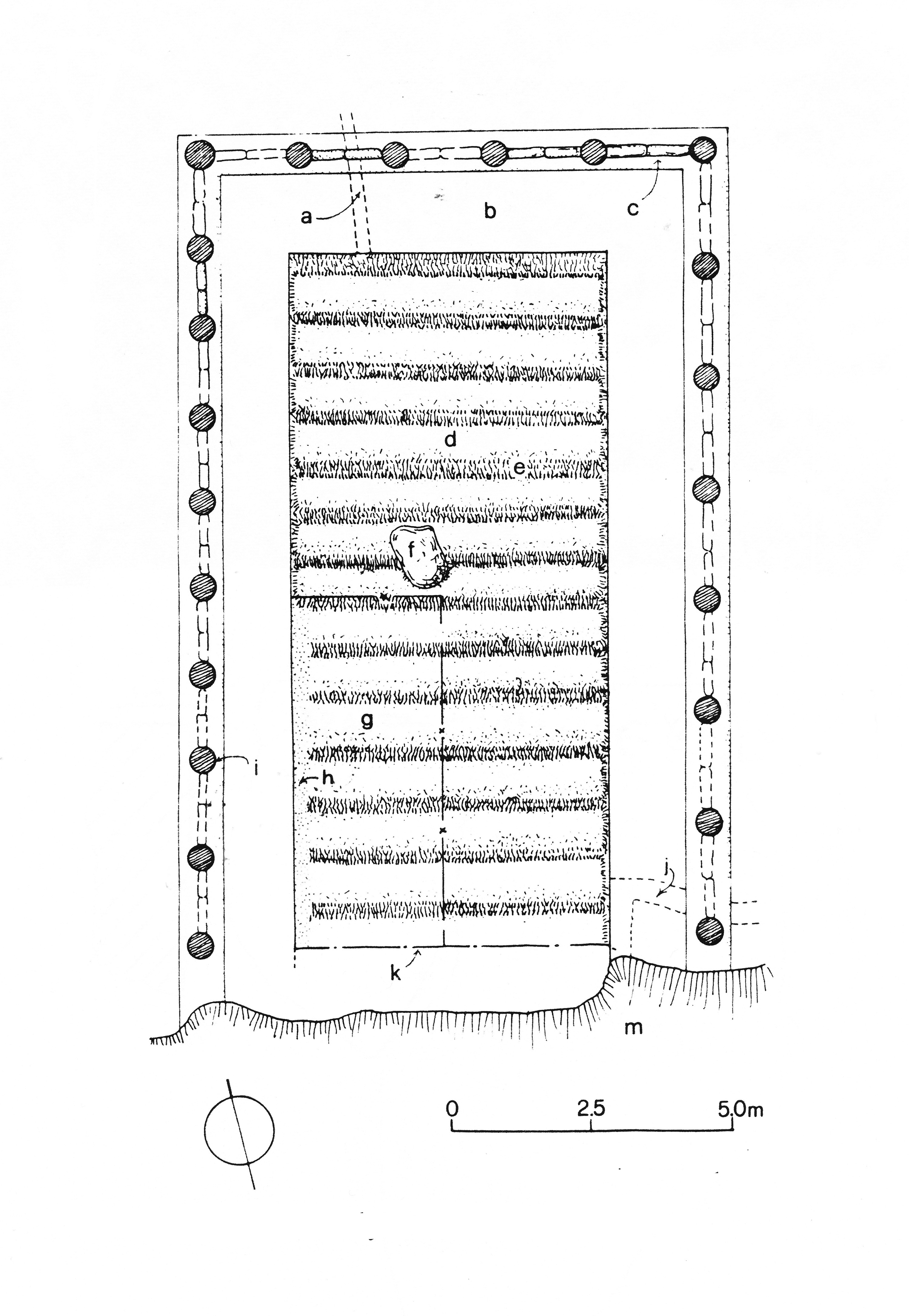Jericho Herodian Third Palace Corinthian Peristyle
Province
Judaea
Iudaea (province) (Pleiades)
Province Description
Judaea, the Roman province, included parts of the areas of the Hasmonean and Herodian kingdoms, notably Biblical Judah, Samaria, and Edom. Its capital was Caesarea Maritima. Roman influence in the region began in 63 CE, when the Roman general Pompey the Great conquered Syria from Mithridates of Pontus, besieged Jerusalem, and captured the Second Temple; he appointed Hyrcanus, one of the two Hasmonean brothers fighting for kingship, as ethnarch of Judaea. Later, Julius Caesar appointed Antipater, the father of Herod, as Judaea's first Roman Procurator. Later these ties allowed Herod to seek backing from Rome against the Hasmoneans in 40 BCE, when the Senate recognized him as “king of the Jews.” His territories came to include the regions of Galilee, Gaulanitis (the Golan),Peraea and the Decapolis, and Augustus later granted him the coastal cities, Batanaea, Auranitis, and Trachonitis. Herod balanced his allegiance to Rome with the independence of his kingdom, often employing architectural projects to express his ambitions and control of nature to express his capacity to rule . His many palaces, placed strategically around the kingdom, feature dramatically designed landscapes and gardens. Upon his death, his son and heir Archelaus was unable to maintain order and the major part of Judaea was annexed to Syria in 6 CE, with its own prefect, while two other sons of Herod, Philip and Antipas, received territories as tetrarchs. By the time of Trajan, Judea was reduced in size and many of the Herodian palaces abandoned, preserving them over the millennia for archaeologists. Hadrian renamed the province After the Bar Kochba revolts (132-135)Hadrian renamed the province Syria Palaestina, erasing the name of Judaea.
The geography of Judaea comprises a wide variety of biomes, from richly watered plains of the Galilee and the Jordan, to the semi-arid Judean Hills, the humid, fertile coastal plain of the Mediterranean, and the deserts of the Dead Sea valley and the Negev. The period for which we have the richest evidence of a garden culture in this region is during the reign of Herod the Great. An allied king of Rome, Herod’s relationships with Mark Antony, Cleopatra, Augustus, and Marcus Agrippa and other officials ave been preserved in the texts of Flavius Josephus. These constitute a rare record of interactions between Rome and its territories, and provide a valuable context for understanding the trends of design in the early imperial period. The proximity of Judaea to Alexandria, whose palaces and gardens lie beneath the modern city and its harbors, may also provide a suggestion of the late Hellenistic garden culture that Romans emulated. Evidence of gardens in the Hasmonean winter palaces at Jericho and the palace identified as that of Hyracanus the Tobiad at 'Iraq al-Amir on the other side of the Jordan Valley provide rare cases where texts can illuminate archaeological evidence. These gardens require further investigation and both are threatened by local development.
Location
Location Description
In one of the most beautiful spots of the Eastern Mediterranean, five km west of Jericho, the biblical “city of Palms,” (Deut. 34:3) lie the remains of a royal complex of the late Second Temple Period (the end of the second century B.C. continuing through the mid-first century A.D). Despite their location in the desert some 200 m. below sea level (one of the lowest occupied elevations on earth) these palaces were set amidst an abundance of vegetation and enjoyed a copious supply of water brought from the surrounding hills via water channels. The palaces are dramatically situated along Wadi Qelt where the gorge opens abruptly onto the Jordan Valley floor. (Fig. 1) They were set amidst the large palm and balsam groves for which the valley was famed. Water channels give archaeological evidence of groves to the north of the palace, but literary evidence suggests that royal holdings from Jericho to Ein Gedi were extensive. None of the gardens have been fully excavated, but many have been examined and the presence of rich soil rather than pavement, as well as water channels and ceramic planting pots provide conclusive evidence for the many gardens discussed below.

Figure 1: Plan of the Hasmonean and Herodian Winter Palace Complex, Jericho (Gleason after Netzer)
Sublocation
Herodian Entertainment Complex, Third Palace
Sublocation Description
The third palace built by Herod in the late first century B.C. merits special mention with regard to the integration of water, gardens and landscape. This palace was sited along a straight section of Wadi Qelt to take advantage of its season flow of water each winter. This area was, however, lower than those on which the first and second palaces had been built, offering a more limited view of the surroundings. This shortcoming was offset by the erection of a viewing pavilion on top of an artificial tel. The overall building complex was rectilinear, with Wadi Qelt cutting through the center, and a bridge spanning the two halves. On the north side lay a complex of banqueting rooms, Roman style baths, reception rooms, peristyle courtyards and colonnaded walks. On the south lay a great sunken garden, the artificial tel and pavilion, and, off-axis, a shallow boating pool. (Fig. 2) The garden features are discussed individually below.

Figure 2: Plan of Herod’s Third Palace (K. Gleason after E. Netzer 2001a: Plan 48).
Garden
Royal Garden
Keywords
Garden Description
Corinthian Peristyle
With porticoes on three sides and measuring 23 x 14.5m, this courtyard, known as area B55, is decorated with columns in the Corinthian order. (Fig. 3) The lower portions of these smooth stucco shafts alternate between red and black; above them the columns are of fluted white stucco while the Corinthian capitals are of stone. Thus far, no entablature or roof tiles have been discovered. A low stone wall, known as a pluteus, ran between the columns. Water entered the garden at the north end, under the pluteus from the aqueduct channel serving the adjacent baths. As with garden B64, an opus signinum walk runs along the exterior perimeter of the porticoes. The ridged surface of the garden lies 12cm below the surrounding walk, which is neatly finished with a curb. The ridges are of packed earth, 3 or 4cm in depth, with no trace of plaster or mortar; and whereas in garden B64 there is a covering layer of fertilized soil, in B55 the ridges are exposed. Beneath the packed surface, lies coarse gravel, perhaps equivalent to the subsoil or fill in B64. No perforated pots were found. The only evidence of ornamentation within the garden is a large boulder, centrally placed and apparently part of the garden scheme rather than fallen debris. Along the curb, layers of mineral deposit were excavated from very fine silt sand. In some respects, this courtyard has the appearance of a pool, although its surfaces are not sealed with the grey hydraulic plaster usually employed in water features elsewhere in the palace complex. The nature of this courtyard remains uncertain pending further excavation, but the mouth of a water channel on the north end and the accreted mineral deposit such either a water feature or displays of plants receiving heavy irrigation.
Plans

Figure 3: Plan of Corinthian peristyle garden (B55) showing contouring (K. Gleason).
Dates
31 BCE - 4 BCE
Bibliography
- G. Garbrecht, and E. Netzer, “Die Wasserversorgung des geschichtlichen Jericho und seiner koniglichen Anlagen,” in Mitteilungen (aus dem Leichtweiss-Institut fur Wasserbau) 115, Braunschweig/Jerusalem 1991 worldcat
- K. Gleason, “Garden Excavations at the Herodian Winter Palace in Jericho, 1985-1987", Bulletin of the Anglo-Israel Archaeological Society, Vol. 7, 1987-8 Jstor
- K. Gleason, “A Garden Excavation in the Oasis Palace of Herod the Great at Jericho,” Landscape Journal 12.2 (1993):156-67wordcat
- J. Kelso, James L. and Dimitri Baramki, “Excavations at New Testament Jericho and Kirbet en-Nitla,” Annual of the American Schools of Oriental Research 29-30 (1949-51): 38-39
- E. Netzer, The Palaces of the Hasmoneans and Herod the Great, Jerusalem: The Israel Exploration Society, 1999: 13-64 wordcat
- Nielsen, Inge, Hellenistic Palaces,1994, 195-201 wordcat
- E. Netzer, The Hasmonean and Herodian Palaces at Jericho: Final Reports of the 1973-1987 Excavations, Vol. 1, Jerusalem: Israel Exploration Society, 2001 : 287-298 worldcat
- E. Netzer, and Garbrecht G, “Water channels and a royal estate of the late Hellenistic period in Jericho’s eastern plains,” in D. Amit, J. Patrich and Y.; Hirschfeld, eds, The Aqueducts of Israel. 353-365. JRA Supplement 46, R.I. 2002 worldcat
- J. Pritchard, “The Excavation at Herodian Jericho, 1951," The Annual of the American Schools of Oriental Research 32-3 (1952-4): 56-58. worldcat
- D. Langgut, and K. Gleason. "Identification of the Miniaturised Garden of King Herod The Great: The Fossil Pollen Evidence." STRATA: Bulletin of the Anglo-Israel Archaeological Society 38 (2020).
Pleiades ID
Contributor
Kathryn L. Gleason (ORCID: 0000-0001-6260-8378
Publication date
21 Apr 2021